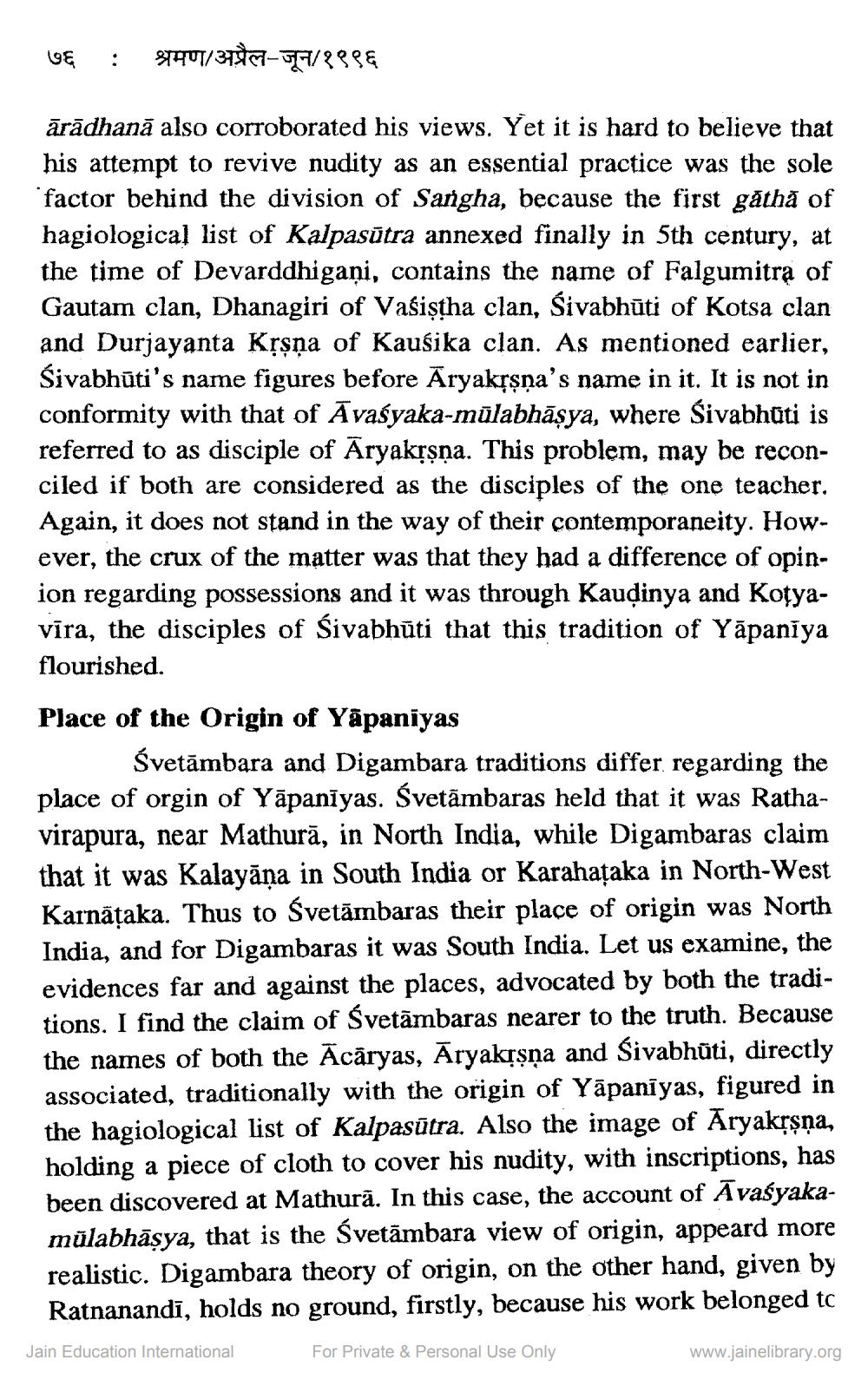________________
be
: 890/37871-7/888€
ārādhanā also corroborated his views. Yet it is hard to believe that his attempt to revive nudity as an essential practice was the sole factor behind the division of Sangha, because the first găthă of hagiological list of Kalpasūtra annexed finally in 5th century, at the time of Devarddhigaņi, contains the name of Falgumitra of Gautam clan, Dhanagiri of Vašiştha clan, Sivabhūti of Kotsa clan and Durjayanta Kșşņa of Kausika clan. As mentioned earlier, Śivabhūti's name figures before Āryakssna's name in it. It is not in conformity with that of Āvaśyaka-mūlabhāsya, where Sivabhūti is referred to as disciple of Āryakrsna. This problem, may be reconciled if both are considered as the disciples of the one teacher. Again, it does not stand in the way of their contemporaneity. However, the crux of the matter was that they had a difference of opinion regarding possessions and it was through Kaudinya and Kotyavīra, the disciples of Sivabhūti that this tradition of Yāpaniya flourished.
Place of the Origin of Yāpaniyas
Svetāmbara and Digambara traditions differ regarding the place of orgin of Yāpanīyas. Svetãmbaras held that it was Rathavirapura, near Mathurā, in North India, while Digambaras claim that it was Kalayāna in South India or Karahataka in North-West Karnāțaka. Thus to Svetāmbaras their place of origin was North India, and for Digambaras it was South India. Let us examine, the evidences far and against the places, advocated by both the traditions. I find the claim of Śvetāmbaras nearer to the truth. Because the names of both the Ācāryas, Āryakrsna and Sivabhūti, directly associated, traditionally with the origin of Yāpanīyas, figured in the hagiological list of Kalpasūtra. Also the image of Aryakrsna, holding a piece of cloth to cover his nudity, with inscriptions, has been discovered at Mathurā. In this case, the account of Āvasyakamülabhāsya, that is the Svetāmbara view of origin, appeard more realistic. Digambara theory of origin, on the other hand, given by Ratnanandī, holds no ground, firstly, because his work belonged to
Jain Education International
For Private & Personal Use Only
www.jainelibrary.org




